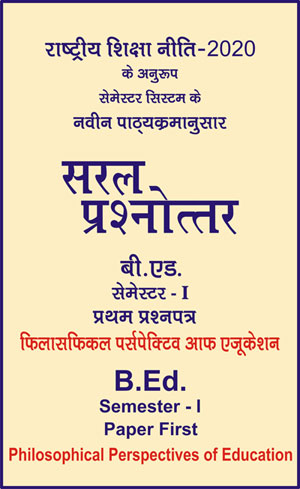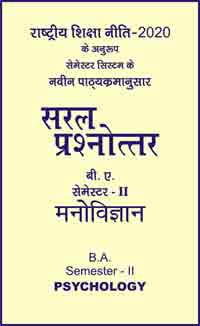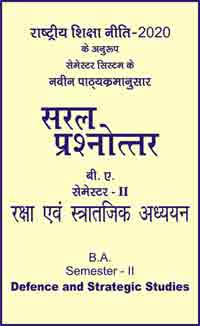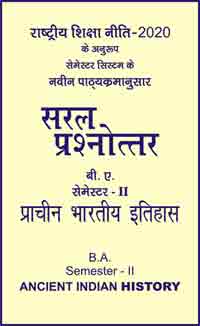|
बी एड - एम एड >> बी.एड. सेमेस्टर-1 प्रश्नपत्र-I - फिलासफिकल पर्सपेक्टिव आफ एजुकेशन बी.एड. सेमेस्टर-1 प्रश्नपत्र-I - फिलासफिकल पर्सपेक्टिव आफ एजुकेशनसरल प्रश्नोत्तर समूह
|
5 पाठक हैं |
|||||||
बी.एड. सेमेस्टर-1 प्रश्नपत्र-I - फिलासफिकल पर्सपेक्टिव आफ एजुकेशन (अंग्रेजी भाषा में)
Question- Into how many parts has Brown divided the agencies of education? Describe each.
Answer -
Brown's classification of agencies of education
Brown sir has divided all the agencies of education into four classes, formal, informal, vocational and non-professional education.
Formal agencies of education: According to Mr. Brown, agencies come in this category, which are created by a society with a view to influencing the children’s knowledge and behavior. Such as schools, libraries, reading rooms, museums, art galleries and religious institutions.
Informal agencies of education: According to Mr. Brown, those agencies come in this category, which are not created by any society to give direct education to the children, but they influence the children in some way, such as family, sports groups and societies and states.
Professional agency of education: Mr. Brown has placed in this class those tools which are manufactured from a commercial point of view but they are also used for our education such as newspapers, magazines, radio, television, dance hall. According to him, these are means which both directly and indirectly increase our knowledge and influence our conduct. What we read in newspapers and magazines, what we hear on the radio and what we hear and see on television, dance halls, theaters and movies, all increase our knowledge and affect our behavior today. Resources are also used in the field of planned education. Today, publicity on the needs of the society and the means of their fulfillment is often done through these meAnswer - There is transmission of lessons in various subjects for education classes in science and other subjects. Not only do students learn from this, but teachers also get acquainted with new methods of teaching lessons. All our central and provincial governments are also trying to make an educational picture. Through these pictures, we have also started giving education.
Non-commercial agencies of education: Under this category, Brown sir has kept those agencies which are constructed for the service of the society and which are neither manufactured from a commercial point of view nor are they used for any commercial work. In this category, he has kept sports, union social welfare center, adult education center, youth welfare organization, scout organization etc. All these agencies go a long way in socializing the child. The participants in the programs organized by them read the true lesson of social service and from their works others also get education of social conduct both directly and indirectly.
One clarification: Mr. Brown has also not made a distinction between the agencies of education and the means of education. Although many scholars still agree with the above classification of Brown and they have got a place in the courses of many universities, but from our point of view it is an original. The scholars of the education world should rectify this mistake.
Conclusion: There is neither any solid basis behind the above three classifications of agencies of education nor according to it, there is no logical boundary between the agencies. The classification presented by Brown is very misleading. He has even accepted the means of education as the agencies of education. We must act with caution. Today, we should not only develop pedagogy on the basis of western education literature, but should also base our Indian literature and our experiences on it. If we work with our intelligence, then many such mistakes can be rectified.
|
|||||














